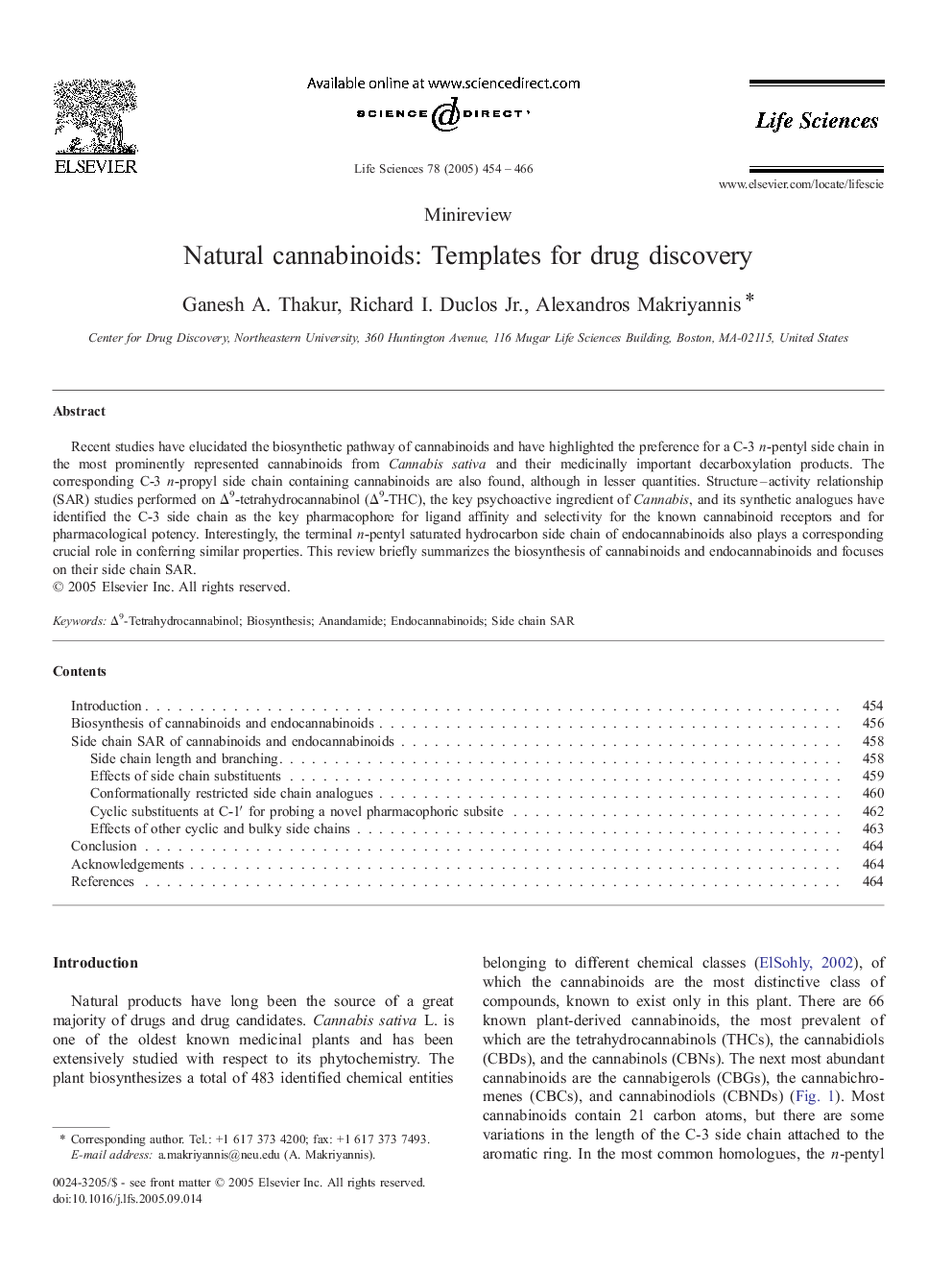| Article ID | Journal | Published Year | Pages | File Type |
|---|---|---|---|---|
| 9012818 | Life Sciences | 2005 | 13 Pages |
Abstract
Recent studies have elucidated the biosynthetic pathway of cannabinoids and have highlighted the preference for a C-3 n-pentyl side chain in the most prominently represented cannabinoids from Cannabis sativa and their medicinally important decarboxylation products. The corresponding C-3 n-propyl side chain containing cannabinoids are also found, although in lesser quantities. Structure-activity relationship (SAR) studies performed on Î9-tetrahydrocannabinol (Î9-THC), the key psychoactive ingredient of Cannabis, and its synthetic analogues have identified the C-3 side chain as the key pharmacophore for ligand affinity and selectivity for the known cannabinoid receptors and for pharmacological potency. Interestingly, the terminal n-pentyl saturated hydrocarbon side chain of endocannabinoids also plays a corresponding crucial role in conferring similar properties. This review briefly summarizes the biosynthesis of cannabinoids and endocannabinoids and focuses on their side chain SAR.
Related Topics
Health Sciences
Medicine and Dentistry
Cardiology and Cardiovascular Medicine
Authors
Ganesh A. Thakur, Richard I. Jr., Alexandros Makriyannis,
